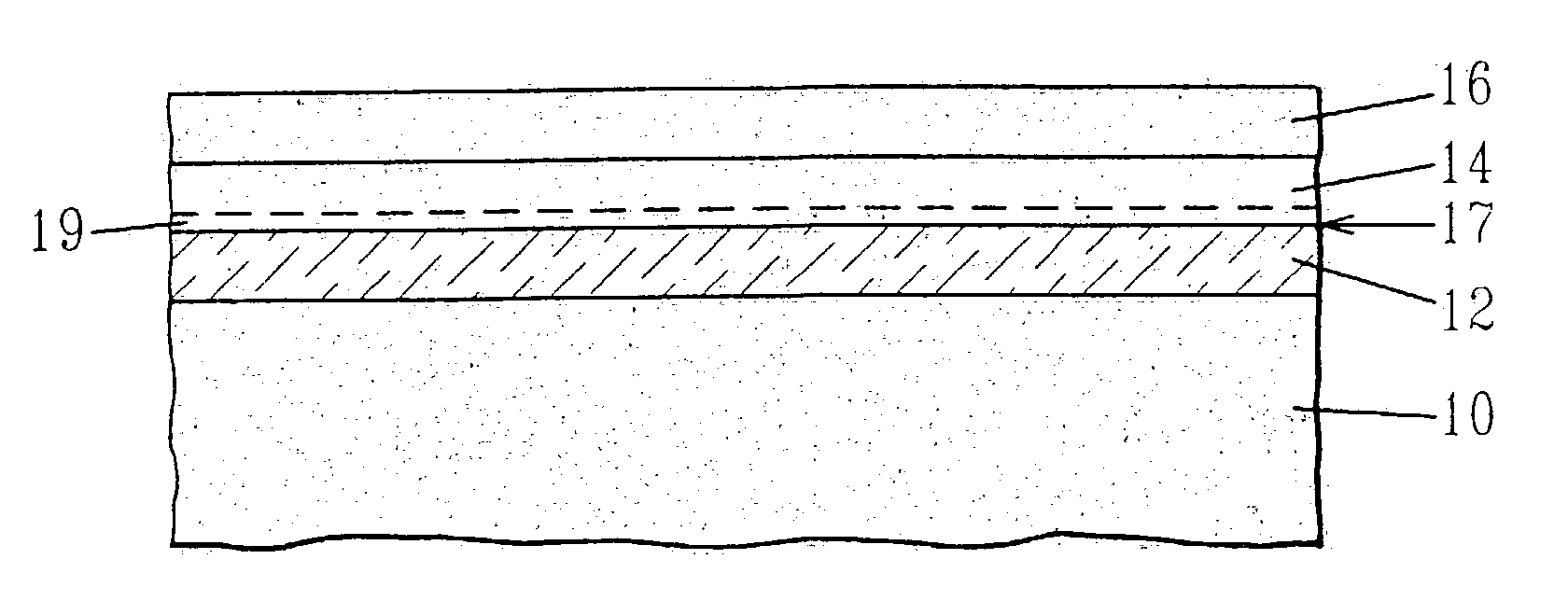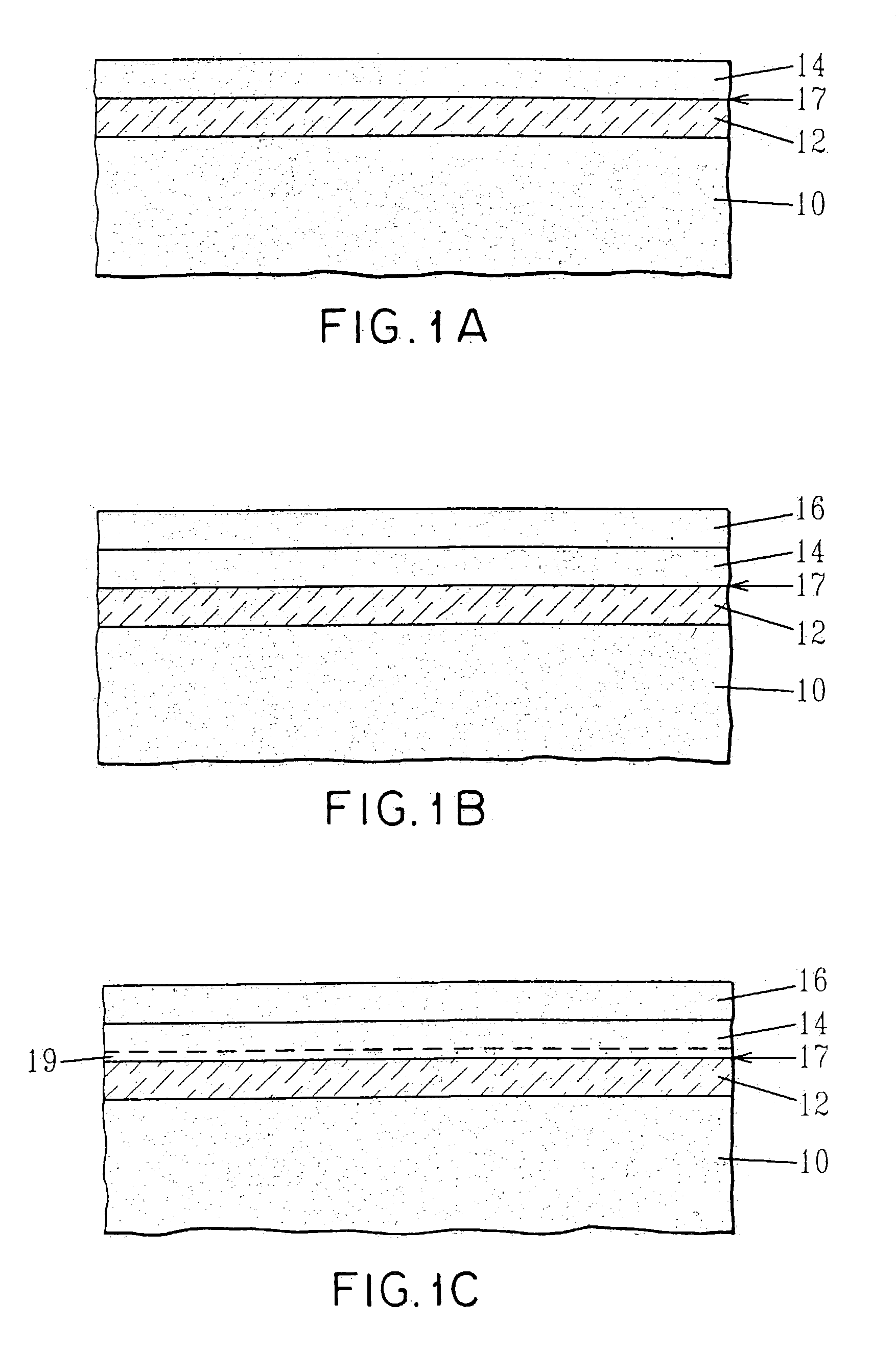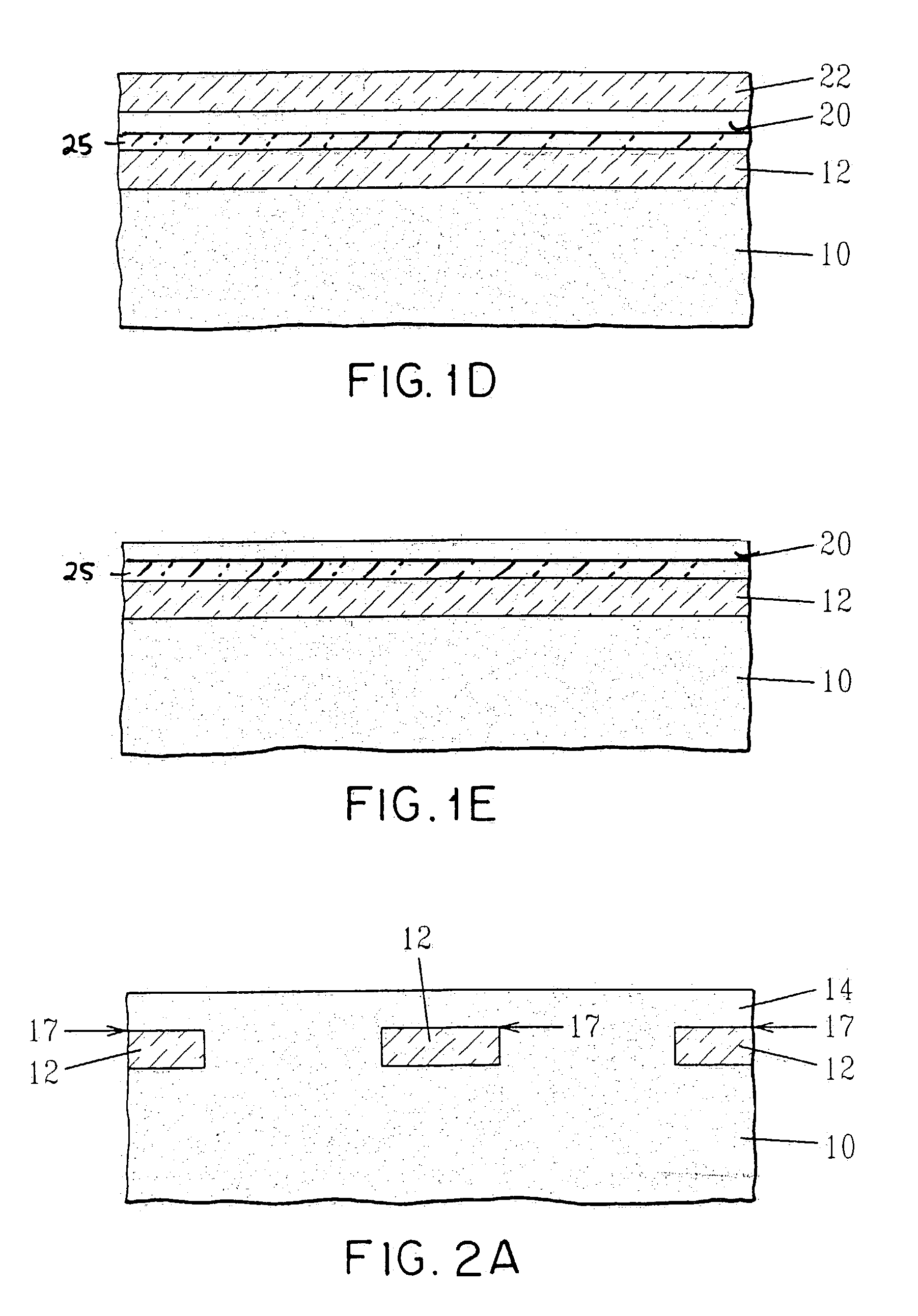Defect reduction by oxidation of silicon
a technology of oxidation and defect reduction, applied in the direction of polycrystalline material growth, transportation and packaging, gel state, etc., can solve the problems of metal oxide semiconductor (cmos) applications
- Summary
- Abstract
- Description
- Claims
- Application Information
AI Technical Summary
Benefits of technology
Problems solved by technology
Method used
Image
Examples
Embodiment Construction
[0027] The present invention, which provides a method of fabricating thin, high-quality, substantially relaxed SiGe-on-insulator substrate materials which can then serve as a lattice mismatched template for subsequent overgrowth of epitaxial Si, will now be described in greater detail by referring to the drawings that accompany the present application. In the accompanying drawings, like and / or corresponding elements are referred to by like reference numerals.
[0028] The present application provides a method for creating a high-quality, substantially relaxed SiGe-on-insulator substrate material by consumption of a sacrificial layer that has served as a defect sink. In the present method, the sacrificial layer, which is the top Si layer of an SOI substrate, is thin and the Ge-containing layer is thick thereby relaxation of the SiGe layer takes place by plastic deformation of the underlying, thin sacrificial layer. The thin sacrificial layer gets consumed in a unique way. Oxidation of ...
PUM
| Property | Measurement | Unit |
|---|---|---|
| temperature | aaaaa | aaaaa |
| thickness | aaaaa | aaaaa |
| thickness | aaaaa | aaaaa |
Abstract
Description
Claims
Application Information
 Login to View More
Login to View More - R&D
- Intellectual Property
- Life Sciences
- Materials
- Tech Scout
- Unparalleled Data Quality
- Higher Quality Content
- 60% Fewer Hallucinations
Browse by: Latest US Patents, China's latest patents, Technical Efficacy Thesaurus, Application Domain, Technology Topic, Popular Technical Reports.
© 2025 PatSnap. All rights reserved.Legal|Privacy policy|Modern Slavery Act Transparency Statement|Sitemap|About US| Contact US: help@patsnap.com



